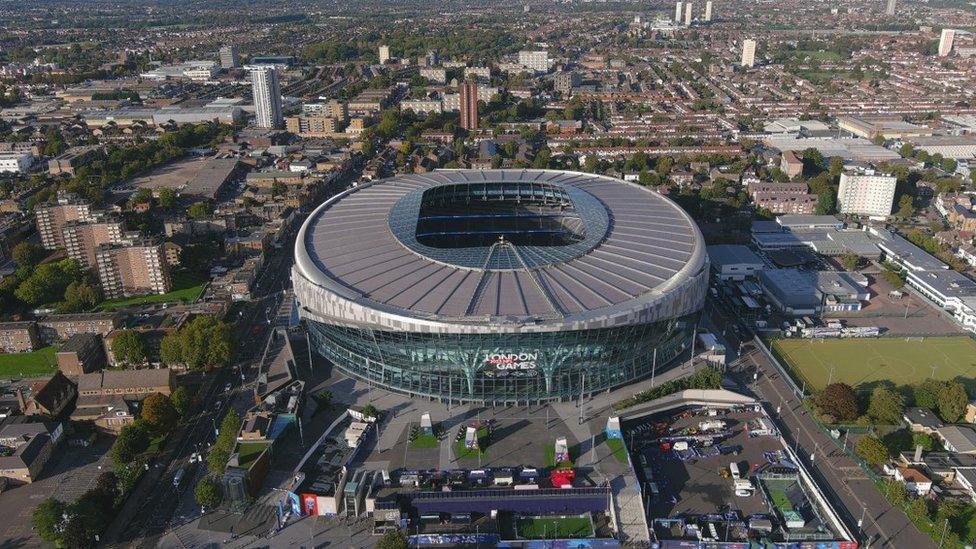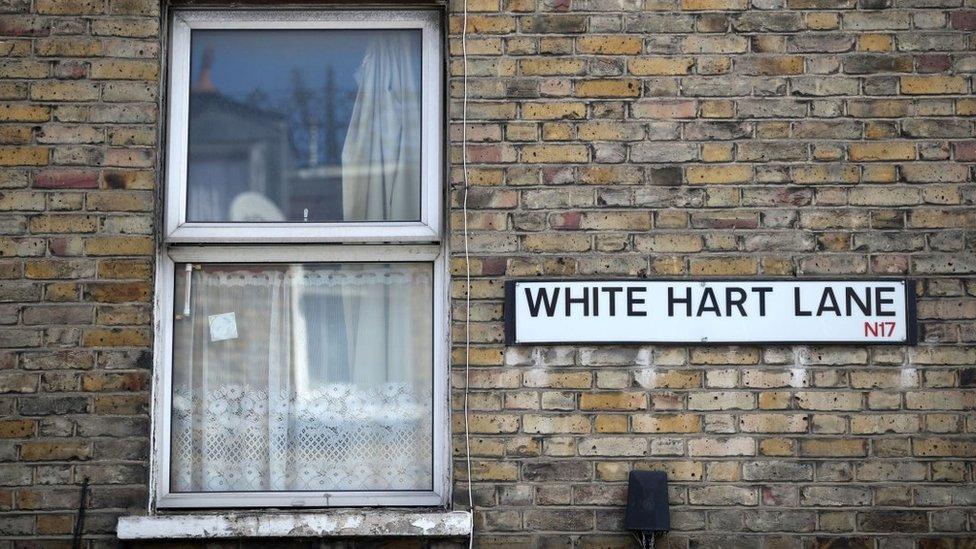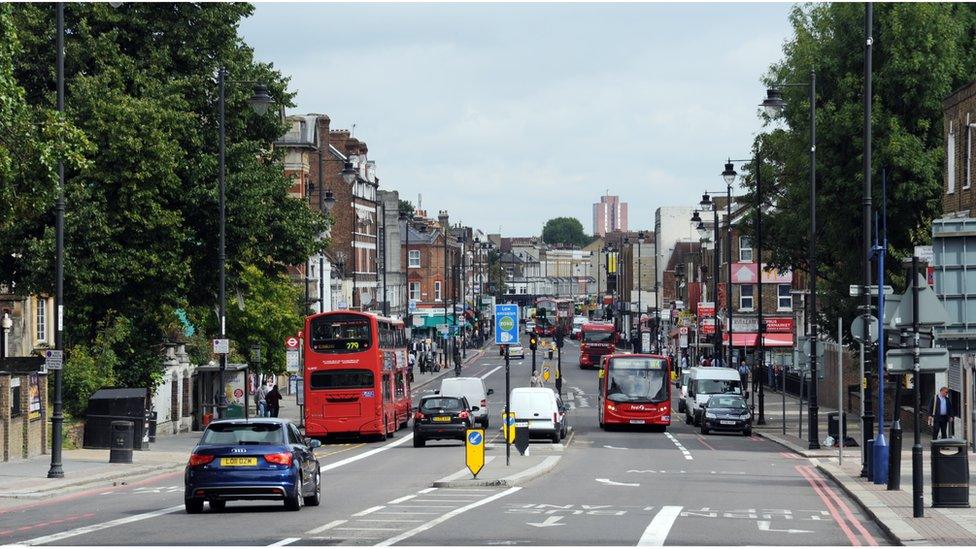Tottenham: Spurs' legal challenge over development dismissed
- Published

Mr Justice Saini said "the regenerative impacts of the scheme are of overwhelming significance"
Tottenham Hotspur football club has lost a High Court challenge over a regeneration scheme near its stadium in north London.
The Premier League joint leaders took legal action over Haringey Council's decision to grant planning permission for almost 3,000 homes and commercial development on land near High Road.
The club's lawyers argued the council failed to consider "heritage impacts" and crowd control issues.
Mr Justice Saini dismissed the case.
As part of the proposals between Haringey Council and developers Lendlease, named High Road West, up to 2,929 homes would be built along with a library and learning centre, office space, a new public park and an energy centre.
Local authority officers said the plans would provide a "significant contribution to the regeneration of the area" including thousands of jobs, improved travel links, and millions of pounds for the economy.
However, it has attracted opposition from residents and business owners because dozens of homes and existing businesses would be demolished - such as those on the Love Lane housing estate and on the Peacock Industrial Estate.
At a hearing earlier this month, the club's lawyers claimed Haringey Council had not acknowledged the impact of the development on local listed buildings and the North Tottenham Conservation Area.

Homes and businesses along nearby White Hart Lane are also among those affected by the plans
They added the council had been "misled" on crowd control because proposed conditions had "failed to secure the measures assessed as being necessary to provide for the safe movement of crowds".
The judge was told the council's independent review had concluded "crowd control measures to be provided both during and after construction would provide at least equivalent provision for stadium crowds queuing for White Hart Lane Station; and that post-construction, the situation for stadium crowds will be improved".
In his ruling, Mr Justice Saini said: "Heritage impacts were lawfully identified and were judged to be outweighed by the substantial public benefits which the scheme would deliver.
"There is a clear development plan support for this development and the regenerative impacts of the scheme are of overwhelming significance in the planning balance."
He added that through planning conditions, "safeguards exist which will enable arrangements for crowd safety to be in place and be capable of being implemented, at each stage of the construction".
He said: "In my judgment, the council was lawfully satisfied that the planning permission created a framework which would ensure that the access to the stadium, which was a key planning consideration, would be satisfactorily achieved without unreasonable impact on [the club]."
The decision follows the club's submission of its own revised plans to build 287 "student bedspaces" in blocks up to six storeys high on the site of a former printworks near the stadium.

Listen to the best of BBC Radio London on Sounds and follow BBC London on Facebook, external, X, external and Instagram, external. Send your story ideas to hello.bbclondon@bbc.co.uk, external
Related topics
- Published2 October 2023

- Published7 December 2022

- Published1 August 2012
